Historical Paleontological Research
The definition of paleontology is “
the science dealing with the life of
past geological periods as known from fossil remains". Many people associate the study of
paleontology with the study of dinosaurs and other large extinct animals; however, paleontology has 1) played a key role in reconstructing the Earth’s history, 2) provided sound evidence to
support evolution, and 3) has helped scientists locate deposits of oil and natural
gas using data associated with the
remains of ancient life forms.
Macropaleontology
Historically, paleontological expeditions consisted of collection, observation
and description of large samples and the equipment included simple field tools
needed to carry out these objectives. In
the 1700’s, 1800’s and 1900’s, the primary focus of paleontological research
was on large fossils including dinosaurs, corals, and echinoderms simply
because they were easily recognizable in the field. These large fossils that are visible without the aid of magnification are called macrofossils. Most "museum-quality" fossils tend to be macrofossils. The major fossil groups for marine and terrestrial
habitats are show in the diagram below.
Micropaleontology
As more powerful microscopes became available, paleontologists were able to study microfossils, which are much more widespread than large (macro) fossils and provide a host of information in very small quantities.
Micropaleontology is the study of these microscopic fossils
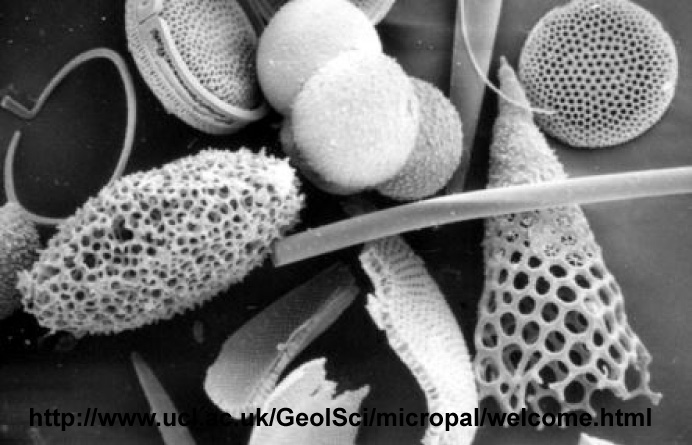 The discipline of micropaleontology aims to solve fundamental geological and biological problems and includes implications for paleooceanographic, paleoenvironmental and biostratigraphic research. Deep-sea coring, scanning electron microscopy, global positioning systems and many other tools that have become readily available in the last 20 years allow paleontologists to do more than ever before. For instance, by using the shell (test) of foraminifera (protozoa), we know that the opening of the North Atlantic occurred approximately 120 million years ago. Huge advancements have been made in the field of micropaleontology since the 1980’s.
The discipline of micropaleontology aims to solve fundamental geological and biological problems and includes implications for paleooceanographic, paleoenvironmental and biostratigraphic research. Deep-sea coring, scanning electron microscopy, global positioning systems and many other tools that have become readily available in the last 20 years allow paleontologists to do more than ever before. For instance, by using the shell (test) of foraminifera (protozoa), we know that the opening of the North Atlantic occurred approximately 120 million years ago. Huge advancements have been made in the field of micropaleontology since the 1980’s.
Current paleontological research
Marine micropaleontology, biostratigraphy, geomagnetism and radiochronology, together, provide a continually improving geochronologic framework for current and future discoveries in the history of the earth and its life forms (Haq and Boersma, 1998). Paleontology has become almost a fluid science, and incorporates many other aspects of the sciences, including biology, geology, climate science, oceanography, and geophysics and the cross-over of these different disciplines has resulted in cutting edge research projects. Here, we highlight just a handful of current topics of research in the field of paleontology and related fields and links to some germane literature.
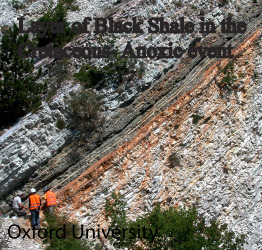
1.
Oceanic anoxic events:
Anoxic events, or episodes during earth’s history when the oceans become completely depleted of oxygen, have occurred many times throughout geologic time and have resulted in mass extinctions. These events can be used as stratigraphic indicators as a "black shale" may be deposited. They may be linked to lapses in key oceanic current circulation and or significant climate warming. During anoxic events, the accumulation and preservation of organic matter was great, which allowed formation of potential petroleum source rocks, therefore, these events actually helped produce most of the worlds petroleum and gas reserves.
- R. Mark Leckie (2002). Oceanic anoxic events and plankton evolution: Biotic response to tectonic forcing during the mid-Cretaceous. Paleoceanography, v. 17, no. 3.http://www.geo.umass.edu/faculty/leckie/Leckie_et_al_2002.pdf
- Page, A., Zalasiewicz, J. & Williams, M (2007). "Deglacial anoxia in a long-lived Early Palaeozoic Icehouse.". In Budd, G.E.; Streng, M.; Daley, A.C.; Willman, S. . Palaeontological Association Annual Meeting 51. Uppsala, Sweden. p. 85
- Wignall, Paul B.; Richard J. Twitchett (1996).Oceanic Anoxia and the End Permian Mass Extinction. Science v. 272, 5265, 115-1158.
- Peters, Walters, Modowan, K.E., C.C., J.M. (2005). The Biomarker Guide, Volume 2: Biomarkers and isotopes in the Petroleum Exploration and Earth History. Cambridge University Press. p. 749.
- Meyer, K. M.; Kump, L. R. (2008). "Oceanic Euxinia in Earth History: Causes and Consequences. Annual Review of Earth and Planetary Sciences 36: 251–288. Bibcode:2008AREPS..36..251M.doi
- Pearce, C. R.; Cohen, A. S.; Coe, A. L.; Burton, K. W. (March 2008). "Molybdenum isotope evidence for global ocean anoxia coupled with perturbations to the carbon cycle during the Early Jurassic". Geological Society of America 36 (3): 231–234.
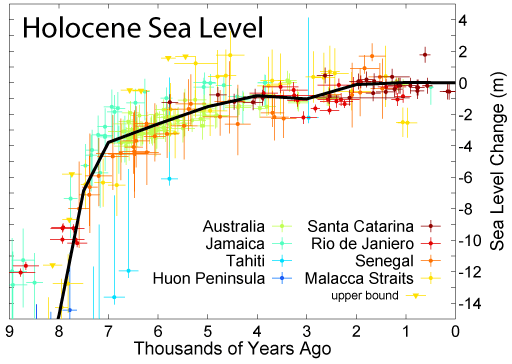 2. Historical
sea level change: Geologically based reconstructions of
relative sea level are derived from morphological, sedimentological ad
biological sea-level indicators. Sea
level rise is a topic that has been in the top of the headlines for two
decades. Understanding historical sea
level change may help scientist understand future sea level change, therefore,
this is an intensely researched topic. Biological indicators typically include Foraminifera
as these protists are widespread
and can be applied in tandem with lithologic information to pinpoint
transitions between marine and terrestrial environments in the past. Foraminiferal
(fossil) distribution provide transfer functions for reconstruction of
sea-level change.
2. Historical
sea level change: Geologically based reconstructions of
relative sea level are derived from morphological, sedimentological ad
biological sea-level indicators. Sea
level rise is a topic that has been in the top of the headlines for two
decades. Understanding historical sea
level change may help scientist understand future sea level change, therefore,
this is an intensely researched topic. Biological indicators typically include Foraminifera
as these protists are widespread
and can be applied in tandem with lithologic information to pinpoint
transitions between marine and terrestrial environments in the past. Foraminiferal
(fossil) distribution provide transfer functions for reconstruction of
sea-level change.
- Edwards, R.J., and Horton, B.P., 2006.Developing detailed records of relative sea-levelchange using a foraminiferal transfer function: an example from North Norfolk, UK. U of Penn Scholarly Commons Paper
- Edwards, R.J., and Horton, B.P., 2000. Reconstructing relative sea-level change using UK salt-marsh foraminifera. Marine Geology, v. 169, 41-56.
- Gehrels, W.R., 2000. Using foraminiferal transfer functions to produce high-resolution sea-level records from salt-marsh deposits, Maine, USA. The Holocene, v. 10, 367-376.
- Kemp et al., 2009. The relative utility of foraminifera and diatoms for reconstructing late Holocene sea-level change in North Carolina, USA. Quaternary Reserarch, v. 71, 9-21.
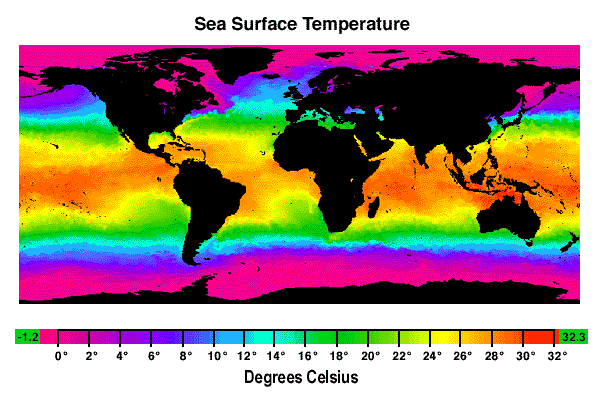 3. Isotopic studies: Oxygen isotopes of foraminifera can reveal things like the temperature of the ocean 50 million years ago or the age of a sediment core by assessing the content of amino acid in the shell.
3. Isotopic studies: Oxygen isotopes of foraminifera can reveal things like the temperature of the ocean 50 million years ago or the age of a sediment core by assessing the content of amino acid in the shell. Oxygen and carbon
isotopes of foraminiferal tests have been
used for decades to aid in the field of paleoceanography. Early researchers (Eptsein,
Buchsbaum, Lowenstam and Urey, 1953) developed techniques that allowed oxygen
isotope composition of
calcite to serve as a paleothermometer and they were
able to reconstruct glacial-interglacial changes during the Pleistocene from deep-sea
fossil foraminifera shells. In recent decades, oxygen and carbon isotopic
records have been applied to understand evolution and history of the ocean and
climate.
- Bemis, B. E., Spero, H. J., Bjima, J., & Lea, D. W. (1998). Reevaluation of the oxygen isotopic composition of planktonic foraminifera: Experimental results and revised paleotemperature equations.Paleoceanography, 13, 150–160.
- Burdige, D.J. (2006). The geochemistry of marine sediments (p. 630). Princeton University Press.
- Epstein, S., Buchsbaum, H. A., Lowenstam, H. A., & Urey, H. C. (1953). Revised carbonate-water isotopic temperature scale. Geological Society of America Bulletin, 64, 1315–1326.
- Ghosh, P., Adkinds, J., Affek, H., Balta, B., Guo, G., Schauble, E.A., Schrag, D., and Eiler, J.M. (2006). 13C- 18O bonds in carbonate minerals: A new kind of paleothermometer.Geochimica et Cosmochimica Acta, 70, 1439-1456
- Hillaire-Marcel, C., de Vernal, A., Polyak, L., & Darby, D. (2004). Size-dependent isotopic composition of planktic foraminifers from Chukchi Sea vs. NW Atlantic sediments: Implications for the Holocene paleoceanography of the western Arctic. Quaternary Science Reviews, 23, 245-260
- LeGrande, A. N., & Schmidt, G. A. (2006). Global gridded data set of the oxygen isotopic composition in seawater. Geophysics Research Letter, 33, L12604, doi:10.1029/2006GL026011.
- Lohmann, G. P. (2006). A model for variation in the chemistry of planktonic foraminifera due to secondary calci?cation and selective dissolution. Paleoceanography, 10, 445–458.
- Mackensen, A., Schumacher, S., Radke, J., & Schmidt, D. N. (2000). Microhabitat preferences and stable carbon isotopes of endobenthic foraminifera: Clue to quantitative reconstruction of oceanic new production? Marine Micropaleontology, 40, 233.
- Ortiz, J. D., Wheeler, P. A., Mix, A. C., & Key, R. M. (2000). Anthropogenic CO2 invasion into the northeast Pacific based on concurrent 13CDIC and nutrient profiles from the California Current. Global Biogeochemical cycle, 14, 917–929.
- Ravelo, A.C. and Hillaire-Marcel, C, 2007.The use of oxygen and carbon isotopes of foraminifera in paleoceanography.
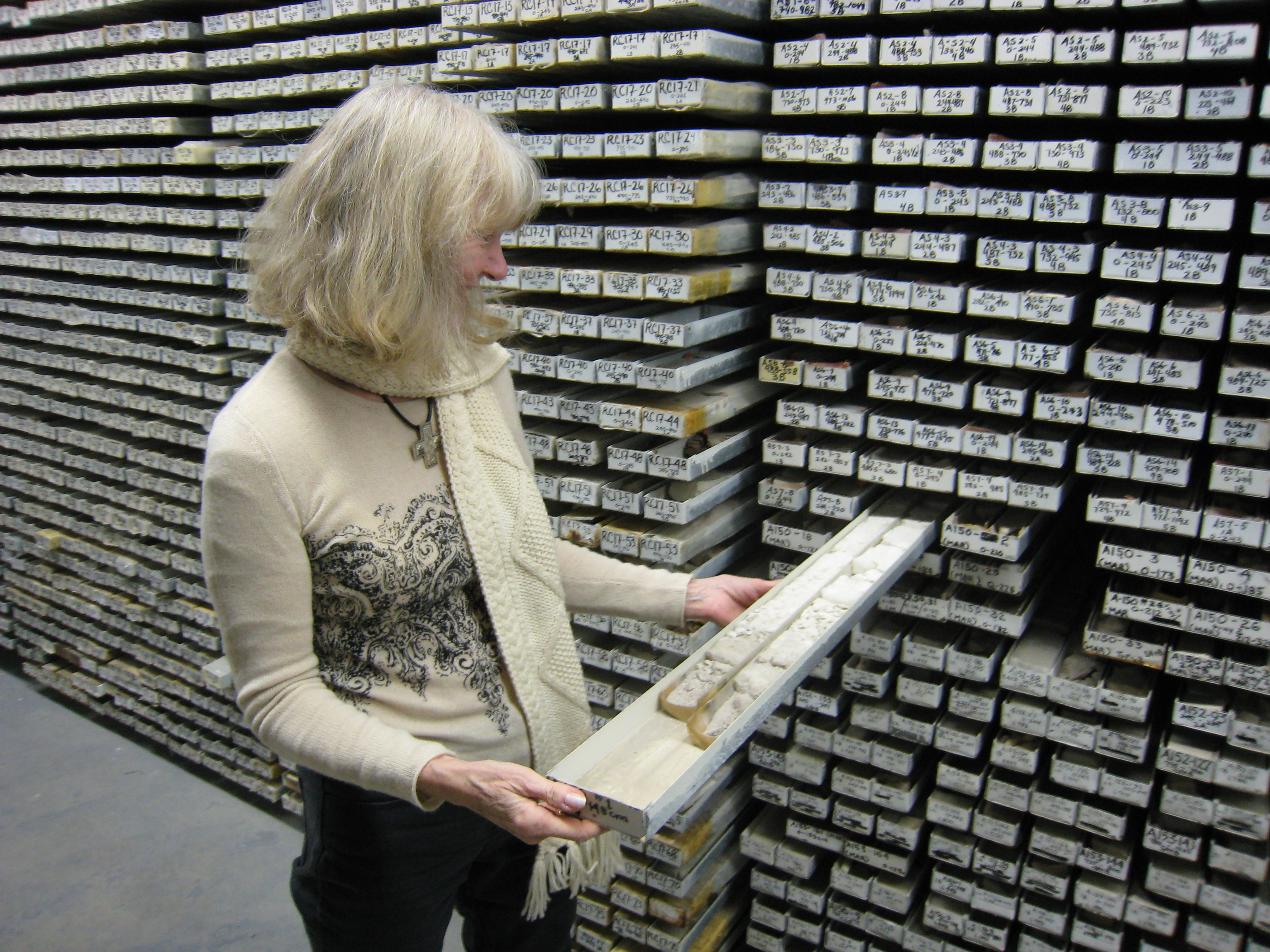 4. Taxonomic standardization, barcoding and repository building:
4. Taxonomic standardization, barcoding and repository building:The identification of many types of microfossils, especially foraminifera, are based on the morphology of their test (shell). Much research has gone into the identification of taxonomy and classification of foraminifera. Many organized databases that catalogue foraminifera and provide images and descriptions can be found on the
Paleontological Links page.
A more recently constructed identification system is based on DNA fragments specific to each species. These fragments are called DNA barcodes. The barcoding region is situated at the 3' end of the SSU rRNA gene and more on the approach and molecular data collection methodology can be seen at The
Foram Barcoding Project website, coordinated by the University of Geneva.
The Ocean Drilling Program/International Ocean Discovery Program
The Ocean Drilling Program (ODP) is
an international cooperative effort which began as the successor to the Deep
Sea Drilling Project initiated in 1968.THE ODP has successfully concluded 110 oceanic expeditions and collected
approximately 2000 deep sea cores with the JOIDES Resolution from major
geological features located in the ocean basins of the world. The Scientific Prospectus from
each expedition is included here.One
can see the overview of scientific objectives and conclusions for each research
expedition, hypotheses that were generated from results of the expedition, photographs,
etc. The ODP was transitioned into the International Ocean Drilling Program and
more recently, the International Ocean Discovery Program, however, these resources are excellent
place to visit to get an understanding of what questions current day scientists
are trying to answer in the fields of micropaleontology, paleoceanography and
climate change.